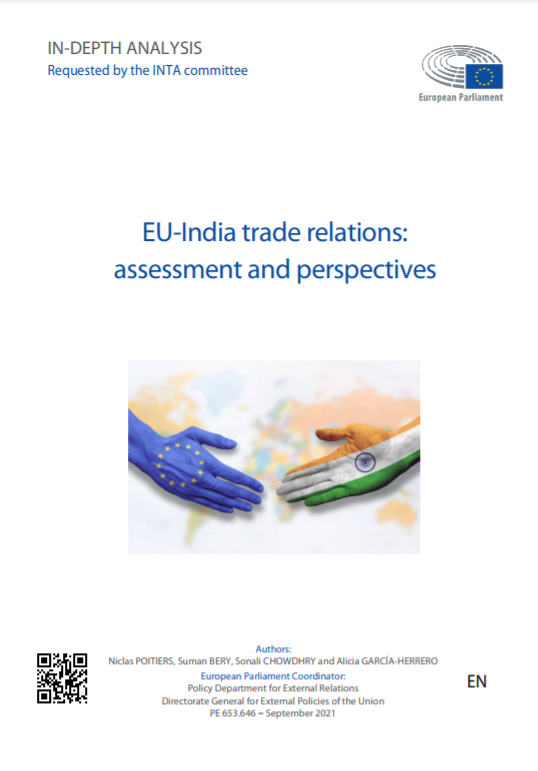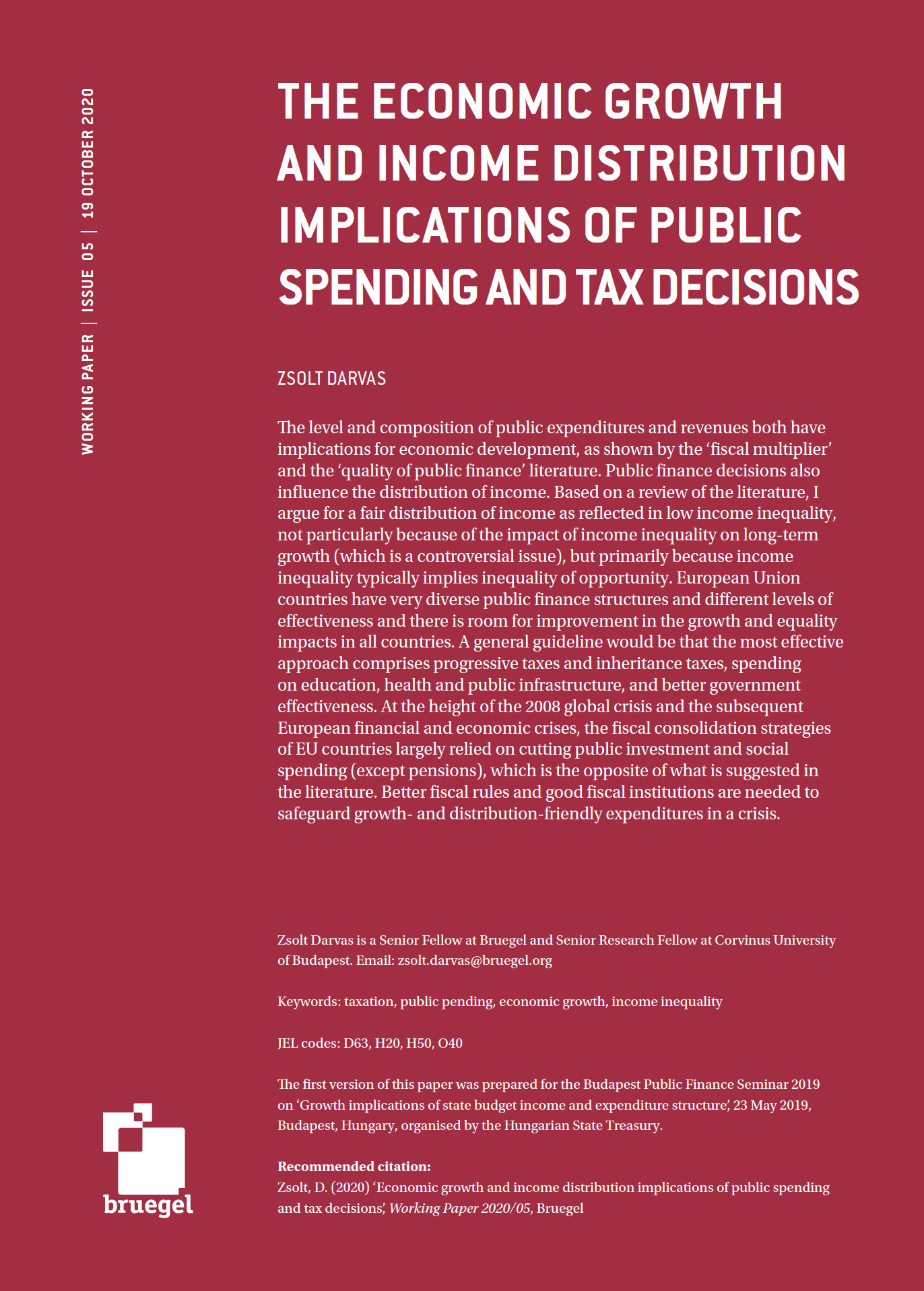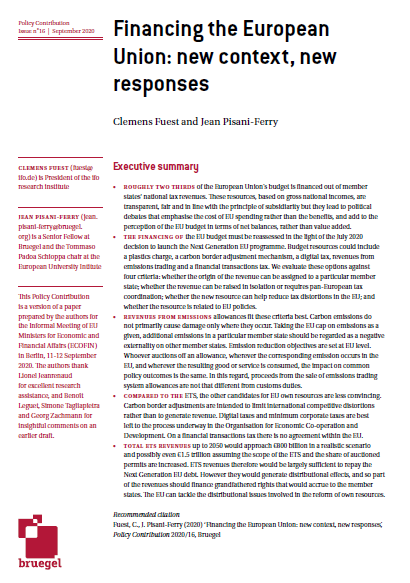Blog Post
Goods and services tax: Landmark tax reforms in India
The complicated tax system in India with multiple rates is one of the most difficult issues investors and industry face. The new uniform tax rate aims to attract investors as well as create lower tax burdens for manufacturing firms and final consumers in India. However, a successful implementation of the goods and services tax (GST) will require an efficient IT infrastructure and capacity building of the entire tax administration.
The most awaited economic reforms in India, for a simplified and uniform tax rate, were passed in the Indian parliament on 3 August 2016. After 11 years of political logjam, debate, and discussion, the biggest tax reform in independent India, and also the biggest economic reform since the structural reforms in 1991, has now been passed in both houses of the Indian parliament. The general sales tax (GST), which subsumes 15 Central and state taxes on goods and services, will create one single indirect tax rate across states, and make India a truly unified market.
The GST required an amendment to the constitution, and approval by two-thirds majority in both houses of parliament. As the National Democratic Alliance had absolute majority in the Lower House (Lok Sabha), the GST bill was passed easily, in 2014. But the bill was pending in the Upper House (Rajya Sabha), due to opposition from the opposition political parties, led by the Indian National Congress, and as the National Democratic Alliance (NDA) government did not have adequate numbers in the Upper House. The irony was that the GST was the initiative of the Congress-led UPA government, which lost power in 2014, after 10 years in government. When the UPA was in power, it had tried to pass the GST, but the Bharatiya Janata Party (BJP), the party Mr. Modi belongs to, did not allow it. That is the real reason the Opposition tried as hard as they did to prevent the ruling NDA from passing the bill, although they did raise a few reasonable issues. However, after prolonged debate and negotiations, sense prevailed, and the Rajya Sabha passed the landmark GST bill unanimously, which is a rare event in Indian politics.
The existing system of Central Value Added Tax (CENVAT) and State VAT suffers from the cascading effect, and thereby leads to high tax on consumers, and different input tax credit from the Centre and states, as the two were not inter-linked, and to differential state VAT rates. The proposed integrated or Dual GST, where there will be central GST and state GST, would replace this system. As the proposed GST is a destination-based tax, the tax burden will shift from the state of origin to the state of consumption, and result in less revenue for manufacturing and developed states. Therefore, there was a proposal of 1 per cent tax on inter-state movement of goods and services, which was earlier meant to help developed states with a manufacturing base, and which has now been dropped in favour of a common market. Though the GST would compensate states for any revenue loss for the first five years, it is not good news for developed states, which have invested in infrastructure and other utilities to attract investment and industries for growth. Therefore, consumption or destination states (like Odisha, Uttar Pradesh, Bihar, and Kerala) stand to gain, while origin states (like Tamil Nadu, Gujarat, and Maharashtra) stand to lose. Overall, one single indirect tax rate all over India will create a common market and lead to a less effective tax burden on final consumers. Come April 2017, for taxation purposes, there will no longer be geographical boundaries across states.
This is by far the biggest milestone of the Modi government in terms of economic reforms. Though the Modi-led NDA has been trying for incremental reforms—though a little cautiously, after the failure to amend the Land Acquisition Bill of 2013 for easier land acquisition for infrastructure projects and industry—this is a landmark achievement, and will be a game changer in coming years. The complicated tax system in India with multiple rates at both the Centre and at states is one of the most difficult issues investors and industry face. In fact, industry and firms spend enormous amounts of time dealing with taxation issues, from tax calculation to availing input tax credit, etc., both at the Central and state level. Over the past decade, this has been one of the most demanded reforms from industry and investors to improve the business environment in India.
A uniform GST for the whole of India will facilitate seamless input tax credit, and thereby eliminate the tax cascading effect and the free flow of goods and services across states. This will help manufacturing firms achieve economies of scale across the supply chain, and they can now source rawmaterial without any additional tax burden, like central sales tax (CST), with proper input tax credit, and sell their products without any additional taxes, which will result in scale economies in production. Ultimately, transaction cost would be lower, and consumers would benefit. The existing differential tax structure across states creates distortionary incentives for different players. For production and logistics, investors prefer locations that offer the least tax rate and administration. Now, this tax incentive-influenced skewed production structure will go, which is good for ‘Make in India’. Therefore, simplifying the tax system through the GST would be a game changer, though other important reforms, like land acquisition and flexible labour laws, will remain to be made.
As more countries adopt a simplified tax structure to attract investment and business houses, the passing of the GST bill has come on time to boost the Indian economy and maintain its ranking as the most favoured destination for investment and growth. The international evidence so far, from countries like Australia and Canada, which adopted GST, like tax reforms, is that they experienced better fiscal finance with price stability in the medium term. Of course, in case the GST rate is high, there is always the fear of price hike immediately after GST implementation in the short-run.
As the main hurdle of constitutional amendment is over, the operational issues of effective implementation are likely to be taken care of soon, as the finance minister has promised to implement the GST from 1 April 2017. And many issues need sorting out.
The successful implementation of GST requires fixing the appropriate GST rate, which is the revenue neutral rate (RNR), and requires an efficient IT infrastructure and capacity building of the entire tax administration. There have been many recommendations for fixing the revenue-neutral GST rate at between 11 per cent and 12 per cent. But the report of the Committee on Revenue Neutral Rate and Structure of Rates for General Sales Tax (2015) headed by Dr. Arvind Subramanian (Chief Economic Adviser to the Government of India) recommended that the RNR should be between 15 per cent and 15.5 per cent, with a standard GST rate of 17-18 per cent.
Second, the government needs to go all out for a successful ‘Digital India’ programme, as the GST will require a state-of-the-art IT infrastructure all over India for effective implementation. Ensuring high-speed IT connectivity across states with huge geographical disparity is such a short time is going to be challenging. Moreover, the entire tax administration needs capacity building to handle the GST.
The proposal to give states the freedom to impose the state GST within a band will dilute the purpose of unified GST. Therefore, the GST Council, the proposed highest decision taking body, made up of voting representatives from the states and the Centre, should stick to one GST rate for every state. There are also issues of balance of power in favour of centre in most powerful GST council with one-third share in voting rights.
For the first time, all political parties came together and passed the GST Bill unanimously. This is not only a mature act but truly an achievement for the Modi government. The GST is called the world’s most complex tax reform, where 7.5 million businesses can register, make payments, and file returns on a GST portal. It is really a big relief for business, as even today, because of layers of taxes and exemptions, the cost of tax compliance in India is too high. In sum, it is a much needed landmark reform.
But, although the merit of the GST is evident and indisputable, the devil lies in the details, as they say, and only time will tell if it is a success.
Republishing and referencing
Bruegel considers itself a public good and takes no institutional standpoint. Anyone is free to republish and/or quote this post without prior consent. Please provide a full reference, clearly stating Bruegel and the relevant author as the source, and include a prominent hyperlink to the original post.










